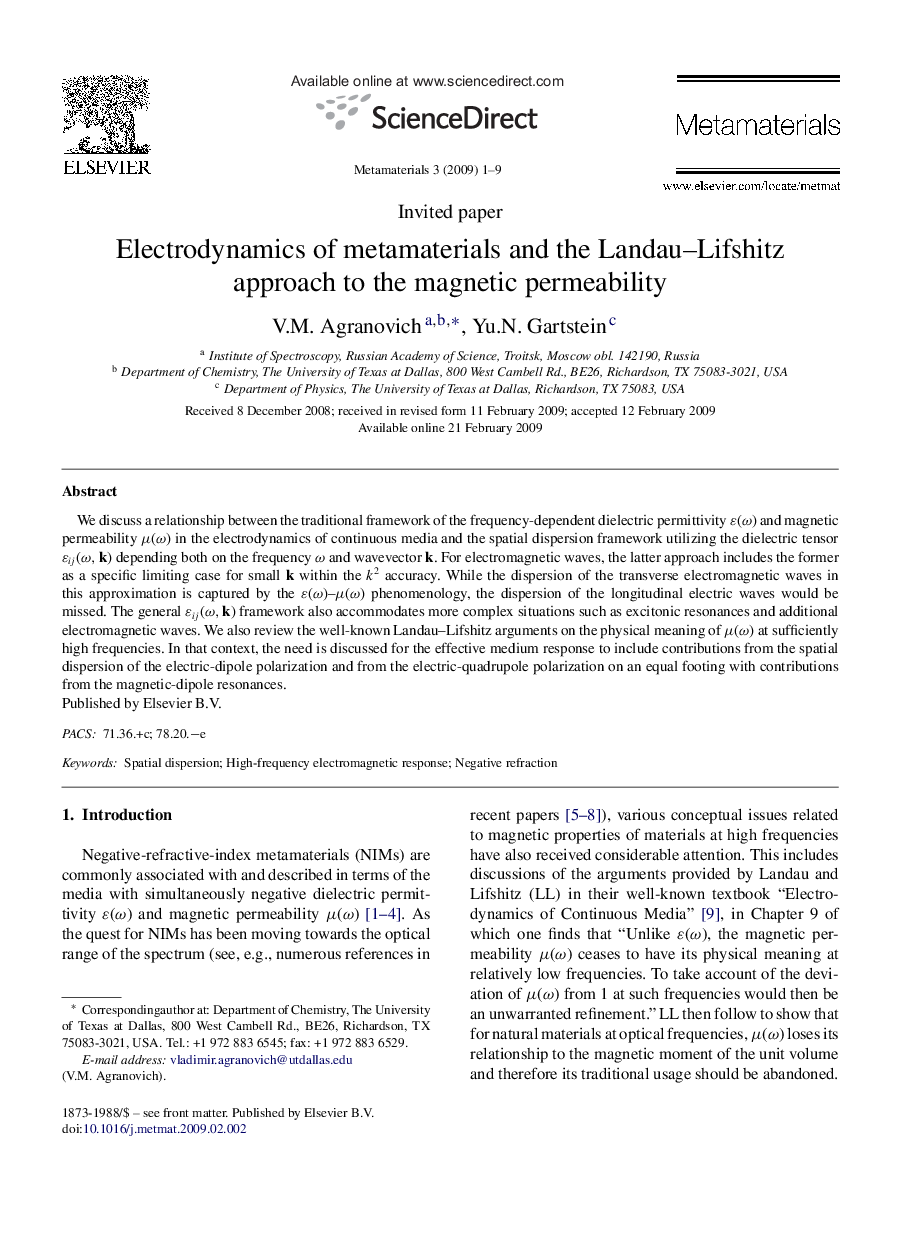| Article ID | Journal | Published Year | Pages | File Type |
|---|---|---|---|---|
| 1532883 | Metamaterials | 2009 | 9 Pages |
We discuss a relationship between the traditional framework of the frequency-dependent dielectric permittivity ɛ(ω)ɛ(ω) and magnetic permeability μ(ω)μ(ω) in the electrodynamics of continuous media and the spatial dispersion framework utilizing the dielectric tensor ɛij(ω,k) depending both on the frequency ωω and wavevector k. For electromagnetic waves, the latter approach includes the former as a specific limiting case for small k within the k2k2 accuracy. While the dispersion of the transverse electromagnetic waves in this approximation is captured by the ɛ(ω)–μ(ω)ɛ(ω)–μ(ω) phenomenology, the dispersion of the longitudinal electric waves would be missed. The general ɛij(ω,k) framework also accommodates more complex situations such as excitonic resonances and additional electromagnetic waves. We also review the well-known Landau–Lifshitz arguments on the physical meaning of μ(ω)μ(ω) at sufficiently high frequencies. In that context, the need is discussed for the effective medium response to include contributions from the spatial dispersion of the electric-dipole polarization and from the electric-quadrupole polarization on an equal footing with contributions from the magnetic-dipole resonances.
